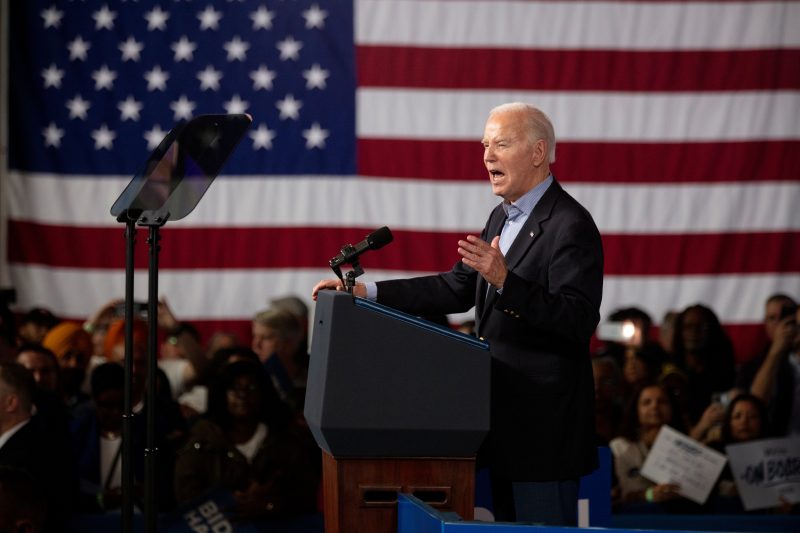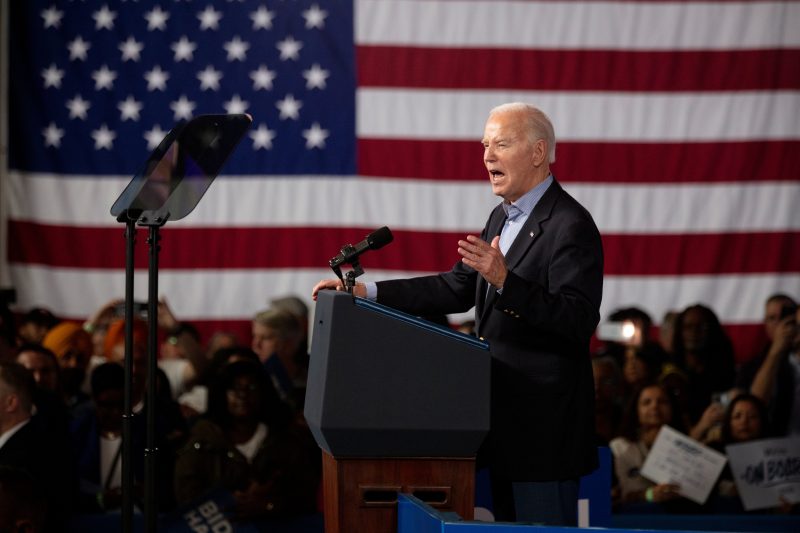
Senate Majority PAC, an independent group associated with Majority Leader Charles E. Schumer (D-N.Y.), announced Monday the reservation of nearly a quarter of a billion dollars worth of television advertising in seven states starting this summer — a massive investment aimed at attempting to maintain control of the chamber by a razor-thin margin.
The retirement of Sen. Joe Manchin III (D-W.Va.) has given Republicans an all-but-certain net gain in the Senate, where the Democratic caucus now controls a bare majority of 51 seats out of 100. With no clear chances to take Republican seats, Senate Democrats are focused on defending seven Democratic-held states and maintaining control of the White House, which would give a Democratic vice president the tiebreaking vote.
The group’s leaders say the total spending this cycle will likely grow beyond Monday’s announcement, including possible ad campaigns in Texas and Florida, the party’s two best opportunities to pick up a seat. Early television reservations allow independent groups to get lower-cost ad time in key states, and the total does not include a separate digital campaign the group is running, including ads that target Black, Latino and young voters.
“In 2024, a woman’s access to abortion, health care coverage for preexisting conditions, and the preservation and strengthening of Medicare and Social Security are all on the ballot,” Senate Majority PAC President J.B. Poersch said in a statement. “That’s why we’re placing the largest ad reservations in Senate history, to remind voters exactly what’s at stake this election.”
The group plans to reserve $65 million in television ads in Ohio, where Sen. Sherrod Brown (D) is running for reelection in a state now considered safely red in nearly all other statewide contests. Senate Majority PAC will put down $42 million in Pennsylvania to defend Sen. Bob Casey (D); $14 million in Wisconsin to defend Sen. Tammy Baldwin (D); $14 million for the open Senate seat in Michigan left by the retirement of Sen. Debbie Stabenow (D); and $23 million for Arizona, where Sen. Kyrsten Sinema, an independent who caucuses with Democrats, is retiring.
Senate Majority PAC has previously announced $45 million in ads to defend Montana’s Sen. Jon Tester (D), arguably the most fiercely contested race involving a Democrat running for reelection. The group has also previously announced $36 million in Nevada ads, where Sen. Jacky Rosen (D) is running for reelection.
Five of the seven targeted states — Pennsylvania, Michigan, Wisconsin, Arizona and Nevada — will be subjected to hundreds of millions of additional spending by the Democratic and Republican presidential nominees, since the campaigns of both President Biden and former president Donald Trump consider them up for grabs.
The group’s Republican rival, Senate Leadership Fund, which is controlled by allies of Senate Minority Leader Mitch McConnell (R-Ky.), has been less forthcoming so far in its plans for fall advertising. The Republican-aligned group has announced spending starting in September of $24.6 million in Montana and $57.5 million in Ohio.
Senate Majority PAC has already started to fund ads through a group called WinSenate attacking Republican candidates Eric Hovde in Wisconsin and Kari Lake in Arizona. A group called Duty and Country, funded by Senate Majority PAC, has been running ads on behalf of Brown in Ohio. Another group associated with the super PAC, called Last Best Place PAC, has been running ads against Republican Senate candidate Tim Sheehy in Montana.
“This cycle Republicans have chosen to put forward a mass of unvetted, shady, corrupt, and wildly out of touch Republicans who care more about lining their own pockets than serving the people they seek to represent,” Poersch said in the statement. “This massive television and digital investment will allow us to reach voters where they are and hold Republicans accountable on our way to holding the Senate.”

